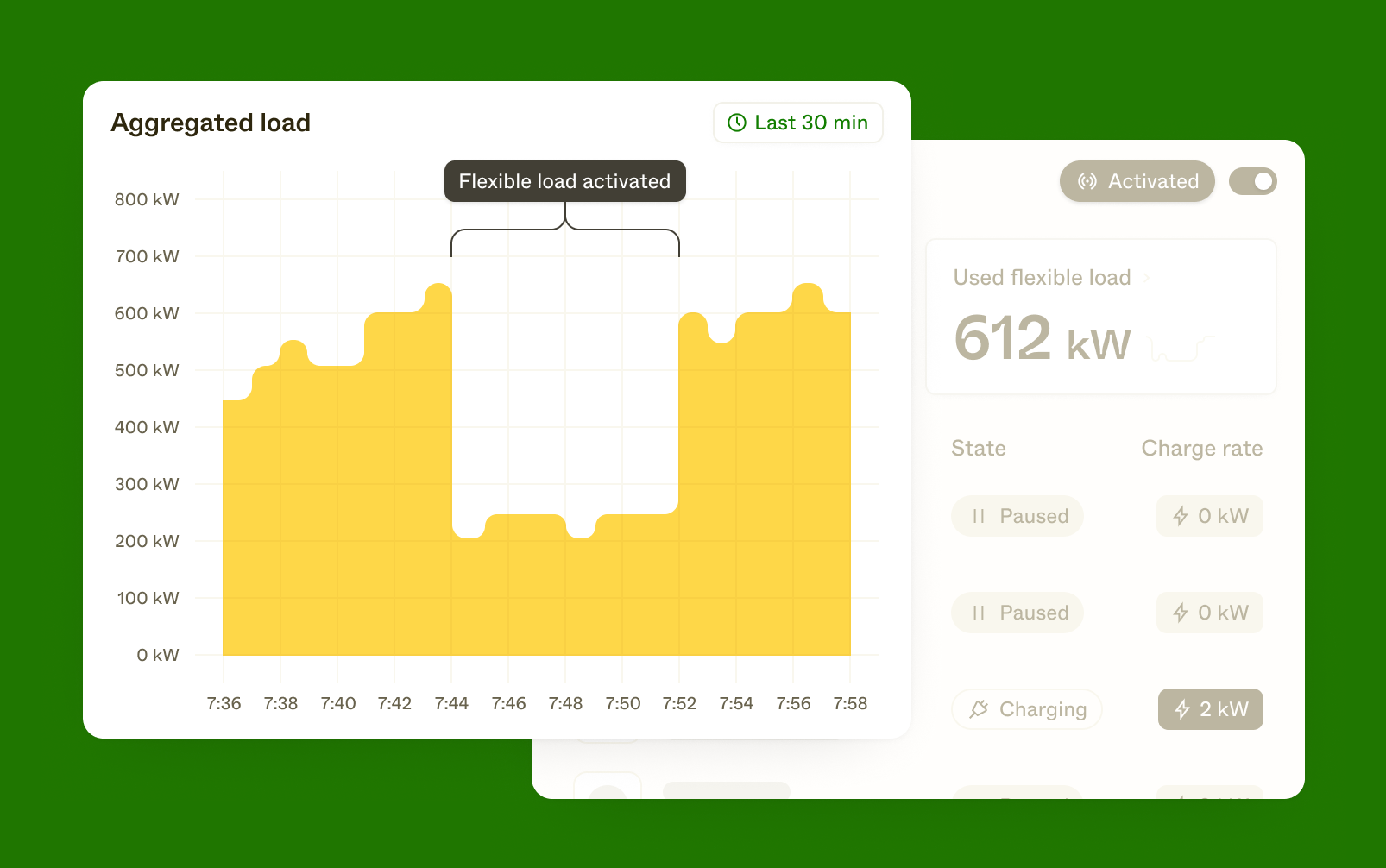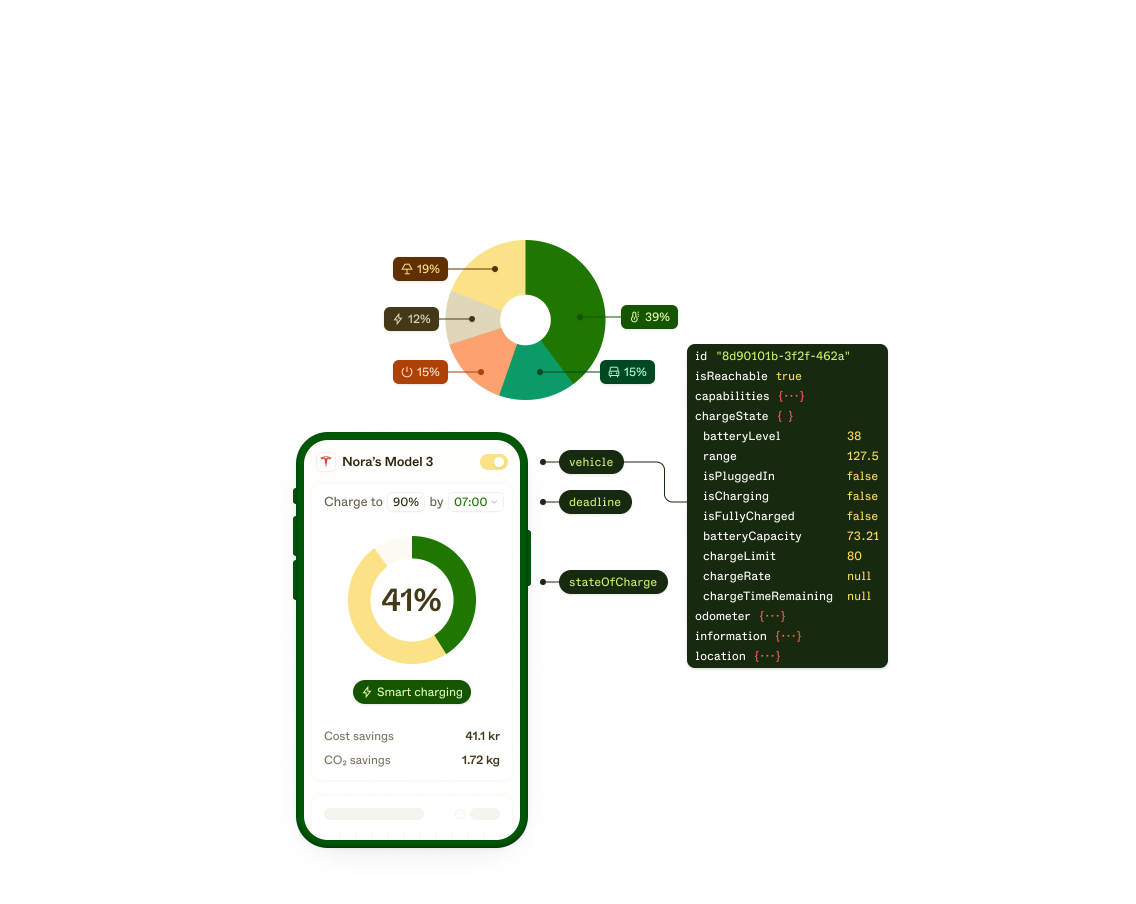The ultimate guide to the Smart Grid

The energy system is one of our most polluting sectors. Changing the way we produce and consume energy is one of the most impactful things we can do in order to slow down climate change and build a more sustainable future.
Generating clean, renewable energy is one part of the puzzle, and one we’re making great progress against globally. But it’s not the whole picture. Sure, we can generate clean energy – but then what? How do we distribute it efficiently, and make sure it’s managed optimally?
Our current energy grid just isn’t up to the task. It was built over a hundred years ago, to fit very different patterns of generation and consumption. Today, it has myriad issues in terms of control, transmission, resilience and more, and that’s putting our ambitious climate targets at risk.
Enter the Smart Grid. The Smart Grid presents a solution to the ever-increasing demand for energy, offering a more efficient and optimized system for generation, distribution, and consumption. The Smart Grid provides intelligent and interconnected infrastructure, and enables us to integrate cutting-edge technologies for managing energy better.
How does it do that? And why should energy retailers and consumers care? In this comprehensive guide, we’ll delve into the inner workings of the Smart Grid, and explain all you need to know. Read on to find out:
- What is the Smart Grid?
- Why do we need the Smart Grid?
- How does the Smart Grid work?
- What are the benefits of the Smart Grid?
- What can energy retailers build on top of the Smart Grid?
What is the Smart Grid?
Let’s start with the basics. The term "Smart Grid" refers to a modernized electrical grid system – one which leverages advanced digital technologies to improve the efficiency, reliability, and sustainability of electricity generation, distribution, and consumption.
Sound revolutionary? That’s because it is. The Smart Grid is a step change from the way our current grid infrastructure works.One of the big differences is that traditionally, electricity grids have been relatively passive. They enable one-way power flow from centralized power plants to consumers. By contrast, the Smart Grid uses a range of technologies to enable the bidirectional flow of electricity and information between power producers and consumers. If you've read our Ultimate Guide to Vehicle-to-Grid technology, you’ll understand what we mean by this. If not, check it out!
The other big difference is that the Smart Grid enables us to seamlessly incorporate renewables into the energy mix. Our current grid struggles with this, because renewable energy generation is, by nature, intermittent. That means that balancing supply and demand is a struggle, especially as we electrify more sectors (like transportation), and our demand for electricity grows.
With the Smart Grid, we can use digital meters, sensors, and intelligent devices to gather real-time data on electricity demand, consumption patterns, and grid conditions. We can then leverage technology to automatically respond to those fluctuations in supply and demand – even using that bidirectional capability to send energy back to the grid when there’s a shortage. Overall, it means we can optimize our energy consumption, cutting consumer energy costs, reducing carbon emissions and building grid resilience.
Why do we need a Smart Grid?
Transitioning to a smart grid system addresses several key problems and challenges faced by traditional electricity grids. The current grid isn’t very efficient, reliable or sustainable, and that leads to negative outcomes for us all. There are number of problems that our current grid system presents, but some of the biggest are:
- Inefficiency and Wastage: Traditional grids lack real-time data and monitoring capabilities. That makes it challenging for utilities to make informed decisions about load management and resource allocation. As a result, electricity generation and distribution aren’t optimized, leading to wastage. In short, we end up generating more energy than we need or are able to store
- Reliability and Resilience: On the flip side, power outages and disruptions are common in traditional grids. When demand outstrips supply, or when there are faults in the system, it can take a long time for service to be restored. In an ideal world, distributed energy resources like rooftop solar inverters or VPPs, which can produce and store renewable energy locally, could be leveraged to prevent outages. But because traditional grids only allow for one-way power flow, their potential isn’t being realized
- Demand-side management: Traditional grids struggle with balancing electricity supply and demand, especially during peak usage periods. This is partly due to poor visibility and communication. There’s no way for utilities to collaborate with consumers in reducing demand and balancing the grid. Instead, we have to ramp up power generation to meet demand.
- Integration of Renewable Energy: Integrating intermittent renewable energy sources into the grid is difficult; our grid struggles to manage their variability and coordinate it with demand. If we can’t integrate renewable energy sources and implement energy efficiency measures, our progress towards climate goals will be much slower.
How does the Smart Grid work?
The Smart Grid solves these problems. With advanced metering and monitoring capabilities, and real-time data on energy usage and grid performance, it provides the infrastructure for a much more efficient system. Up-to-date information better decision-making, proactive grid management, and effective integration of renewable energy sources.
But how does it work? Broadly speaking, the Smart Grid has three core components:
- Smart Meters: These devices provide real-time energy consumption data, and enable bidirectional communication between consumers and utilities.
- Sensors and Monitoring Systems: Distributed throughout the grid, these sensors collect data on energy usage, voltage levels, and equipment health, allowing utilities to optimize grid performance.
- Communication Infrastructure: Advanced communication networks facilitate the exchange of data between different components of the smart grid, ensuring seamless coordination. APIs are one of the most important elements. They establish a connection between devices and the grid, and allow for the exchange of data between them.
What are the benefits of the Smart Grid?
In a Smart Grid system, utilities have access to vast amounts of real-time data generated by smart meters, sensors, and other grid components. They can leverage this data to gain valuable insights that help optimize grid operations.
It unlocks a huge amount of potential. On the supply side, these insights help utilities make more informed decisions about load balancing, distribution and pricing. That results in optimized energy utilization, and less wastage.
On the demand side, the Smart Grid offers more flexibility in terms of consumption. It enables things like Demand Response programs, where consumers are incentivized to adjust their energy usage during peak demand periods. Actively managing and balancing energy demand reduces strain on the grid and minimizes the need for additional generation capacity. That’s critical for accelerating our transition to a more sustainable, environmentally-friendly system.
Finally, the Smart Grid enables us to plug in and leverage more renewable energy sources. Unlike the traditional grid, which relies on centralized power generation from fossil fuels, the smart grid enables the seamless integration of distributed energy resources. Because the Smart Grid allows for the bidirectional flow of energy, things like solar inverters and home batteries can be used to feed energy back into the grid locally, helping build resilience.
What can energy retailers build on top of the smart grid?
But what does this look like in practice? There are lots of ways the energy retailers can leverage the data collected through the Smart Grid to build personalized, value-added energy services that add real value for their customers. They range from energy management solutions, to energy efficiency insights and recommendations, and even customized tariff plans. Smart Grid innovation is only just getting started – but here are some of the best use cases we’re seeing today:
- Demand Response Programs: Demand Response programs incentivize customers to adjust their energy usage during peak demand periods. By participating in these programs, customers can contribute to grid stability – and get paid for it.
- Virtual Power Plants (VPPs): Virtual Power Plants (VPPs) aggregate distributed energy resources (DERs) like solar inverters, home batteries and electric vehicles (EV)s. VPPs can be used to store excess energy, and redistribute it when the grid’s under pressure.
- EV Smart Charging: Energy retailers can help EV drivers optimize charging patterns based on grid conditions and electricity pricing. Smart charging programs EVs to stop charging when demand is high, and start again when demand is low, while ensuring that they’re fully charged by a set deadline.
- Home Energy Management: Connecting DERs within the home to the smart grid enables remote monitoring and control of energy usage. It enhances convenience and energy efficiency while cutting customer energy bills.
The Smart Grid is transforming the way we manage energy, enabling energy retailers to deliver reliable, efficient, and sustainable power to their customers. Meanwhile, customers gain greater control over their energy usage, allowing them to monitor and adjust their consumption patterns.
Empowering both energy retailers and customers to actively participate in energy conservation efforts, and reduce strain on the grid, is vital as we transition towards a more sustainable future. The Smart Grid is a fundamental part of that transition, helping us all build a cleaner, more efficient, and customer-centric energy industry.
To find out how Enode can help you start building on top of the Smart Grid, get in touch.
